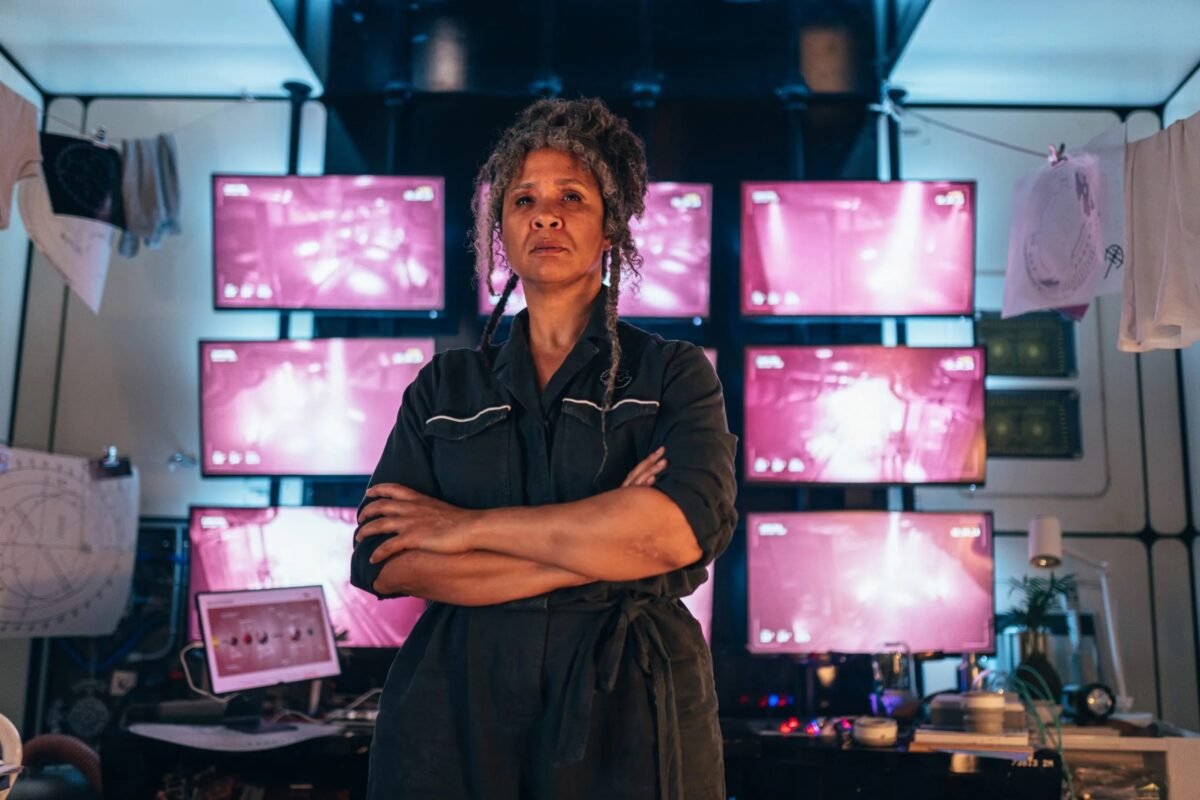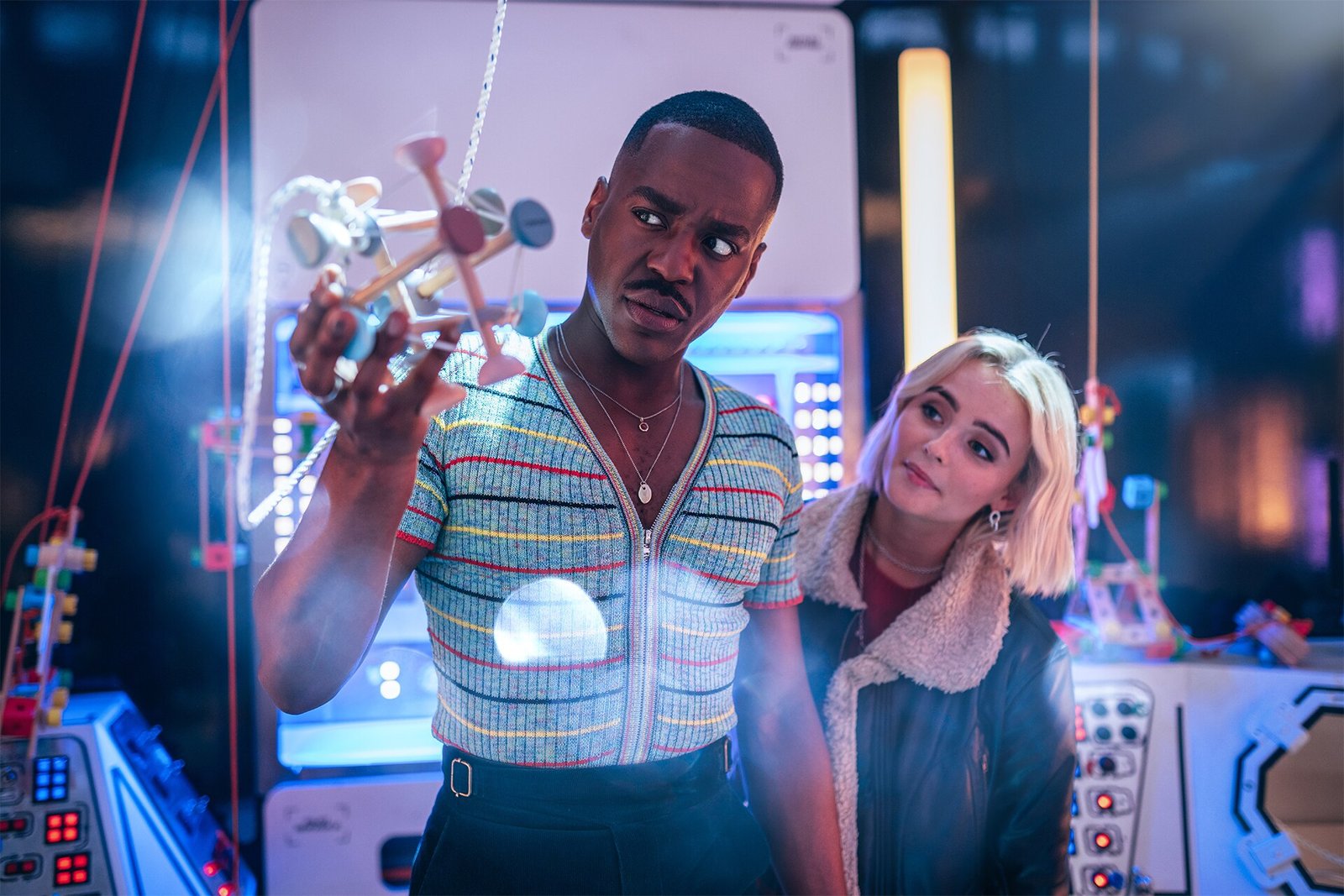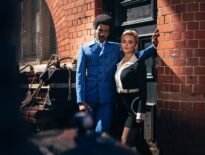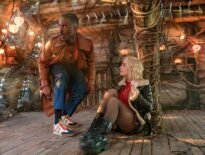For someone who grew up in an era of YouTubers pushing the boundaries of weird ideas in video form, in ways that appealed to impressionable and very creative children while leaving adults totally bemused and often shocked, I can’t believe that Doctor Who’s core television product has somehow gone a step beyond them in the pantheons of weirdness.
Often uber-weird content that makes you go ‘I can’t believe what I’m watching’ achieves that effect by leaning on ideas that are outrageous because they willingly ignore social expectations and mock them to the point of trying to incite offence. Many (end of career) stand-up comedians attempt the outrageous ideas approach, but it falls flat because it is lacking the weirdness that actually makes the audience engage with the ideas.
Then there are artists whose work stands out because it does not fit in any recognisable box of definition and leans on ideas or visuals that also ignore our expectations, but the weirdness is hard to engage with because it lacks the recognisable or non-abstract elements needed for an audience to connect to.
Space Babies is very, very literal, very, very weird, and is very easy to engage with — at first. But the more it commits to its weirdness, the more it feels like a tone-setter for Ncuti Gatwa’s era rather than a story in its own right for the Fifteenth Doctor or his companion.
There is no pre-titles scene, which feels like a missed trick when this episode has a monster that’s perfectly suited to a jump scare cliffhanger, and the actual opening scene doesn’t work at first because of a mismatch in tone with the rest of the episode. Murray Gold is left to get the magic of the moment across as Ruby Sunday enters the TARDIS, when the rest of the runtime instead relies on the Fifteenth Doctor’s charismatic line delivery and his chemistry with Ruby to tell the story, no matter how naff the dialogue is.

Once the main characters do get chatting, we see how physical and almost overexcitable (which is very notable later on) Gatwa’s performance is. When Mille Gibson does similar throughout Space Babies, it’s hard to tell if that’s instilled in her character or if she is bouncing off her co-star.
She does get to briefly play Ruby in a more diverse way before the main plot begins, as she steps on a pre-historic butterfly in a fun moment used in many trailers. How that scene is concluded is nonsensical, and it’s the first of many moments where the story relies on Gatwa’s charisma to move it along and thankfully this is the least convincing instance since it is also the least important one.
The plot rapidly accelerates once the TARDIS makes it to the spaceship populated by space babies, with the editing pace having already got up to speed before that, and there’s plenty of exploring and then running down corridors. A physical performance works for such staples of the show, but less so in still moments where the Doctor’s hands instinctively go to cover his companion’s eyes or mouth rather than his own.
Outside of the lore-dumping dialogue, the Doctor gets his key character-explaining moment when he runs away from a monster and wonders why. It’s basically setting a rule saying “my character should always be enthusiastic and driven by curiosity, and never fear”. Having a scene that depicts that understanding to the audience this early, rather than waiting for the actual showdown between Doctor and monster, works to the episode’s favour and again relays that this is all about the tone we should always be expecting now from the Doctor, and therefore the show.
Once the babies themselves are integrated into the plot, it’s harder to judge the effectiveness of the character work because they are, of course, babies. No matter how good the CGI for the lip syncing is, how do you judge the performances of a bunch of talking space babies? Obviously it’s wonderful to see the moments where the Doctor and Ruby are being lovingly warm to them, and Gatwa really pulls off not only talking to them as if they’re only two years old but also conversating with them as if they’re equals. But each time the babies reply, you do have to put your disbelief to one side because it is exceptionally weird.
The science-fiction element of this is political commentary more than anything else, and hits home for American and British audiences in different ways, but rather than examine the science behind the weirdness, there instead is the Doctor delivering a lot of generalised comments about time and space… and, er, not paying taxes. The way he jovially treats a baby farm as a totally, totally normal thing, while it is a very alien and weird concept to the audience, helps deliver an idea that is so distant from our social expectations.
He also gets Ruby to call her mum from the far future, which like a lot of this episode is reminiscent of the Ninth Doctor’s second episode, The End of the World. Just in an inferior way.

However, where this episode does deliver, thanks to its weirdness, is being unnerving and scary. The monster of the week is a brilliantly horrific design and most of its screen time consists of rapid cuts (well done to the editors, once again); once you’ve got over the slightly unsettling/uncanny valley experience of talking babies, you’ve then got to watch them scream and cry and the audio mixing of multiple crying children is as uncomfortable to hear in a sci-fi television show as it is at a nursery or on the news.
Once it comes to actually facing the monster of the week, which has a funny but ill-defined scientific premise, the (not villainous) babies’ motivations suddenly change and they get as many moments of character-defining bravery as Ruby. Which isn’t a balance you probably want with a new companion who is still establishing themselves to the audience and to some degree the Doctor.
The one other adult in the cast is Jocelyn Sancerre, who is played with warmth by Golda Rosheuvel and brings some comedy in too. She sets up the next heroic moment which is all for the Doctor and leads to another funny but ill-defined scientific premise that concludes the TARDIS crew’s time on Baby Station Beta.
Space Babies ends with a heart-to-heart in the TARDIS, reminding the audience of the importance of the events of The Church on Ruby Road and that the Doctor’s choice of companion goes beyond their brilliant chemistry, then returns Ruby to her own time by crashing into her mum’s kitchen.
The similarities with Russell T Davies’ first time at the helm of the show are made clear with one of the Doctor’s closing lines: “Tell your mum not to slap me!”
As in his first full episode, Gatwa puts in a performance that makes him immediately recognisable and lovable as the Doctor. Gibson is not quite given enough to do, but with two baby-themed episodes in a row, maybe there was a risk of repetition if she led more of the action, and the story does leave you wanting to see more of this TARDIS crew but in a less weird setting. But with the tone now set, it looks like The Devil’s Chord continues this era’s rather unusual approach to Doctor Who…



